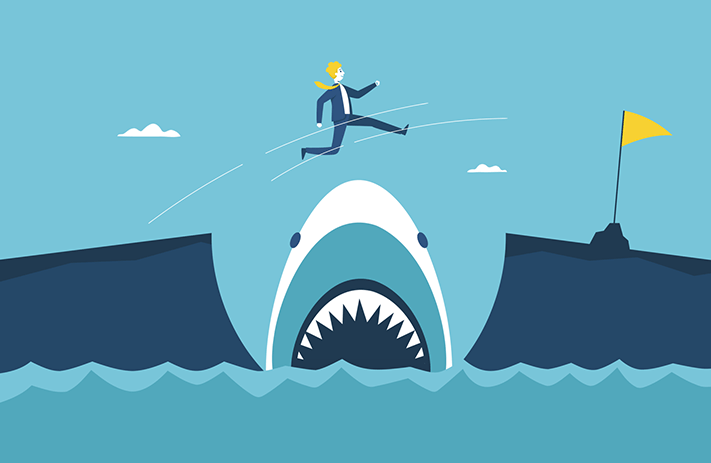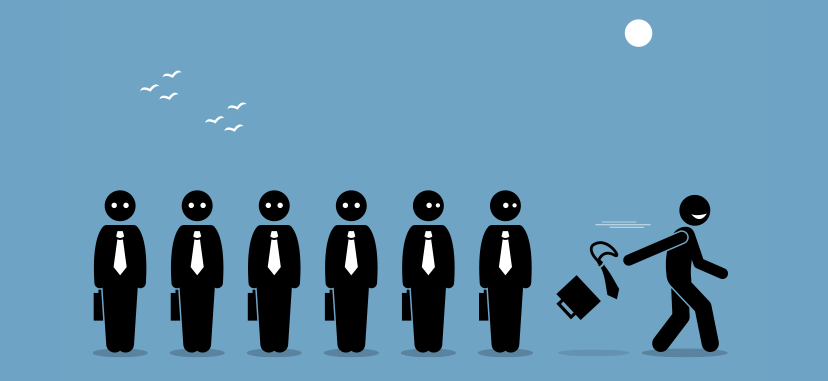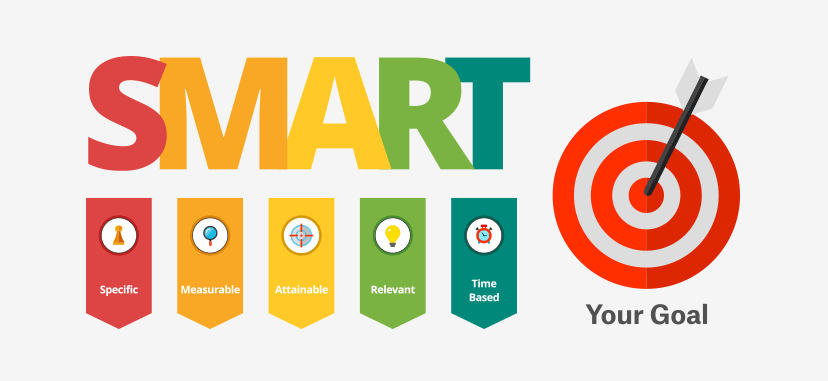Have you ever set your mind to complete a DIY home remodel, and the very next day you started ripping out tiles and pulling up carpeting? When you’re really excited about an undertaking, the inclination to dive right in is almost irresistible.
Yet, when a project executes before outlining the budget, the requirements and the scope, it’s usually a setup for failure.
When we get ahead of ourselves, the project becomes a whirlwind. You don’t know where to turn, what to work on, or what success even looks like. You may tear out a wall, only to discover that you don’t have the budget to replace it. Or begin an ambitious remodel that ends up taking so long it’s never really finished.
Fortunately, there’s a system for having things in place to execute a project at the proper time and build the deliverable of your dreams.
End-to-end (E2E) project management breaks a project down so that you know exactly what to do and when. It’s a formula for delivering a quality product, every time.
Wanna know more about the meaning of end-to-end project management, and the stages of a project lifecycle? That’s what this post is all about.

E2E Definition & Benefits
End-to-end project management is a methodical process for moving through a project from the beginning stages all the way to completion. It breaks a project down into key stages, and identifies all the tasks and objectives for each stage. The process creates a continuous workflow, as it sufficiently prepares the project to move into each successive stage.
Here are some of the central promises of end-to-end planning:
The Project Stays Within Its Constraints
End-to-end planning creates orderliness and deliberation. Things are carefully planned and monitored, and so it increases the odds that a project is completed within its stated scope, budget and timeline.
The Project Manager Grows and Improves
With end-to-end planning, a project manager takes plenty of time to reflect and analyze systems at every stage of a project. This creates opportunities to improve and update processes with every go-around.
It Decreases Rework
End-to-end planning is an efficient process. It encourages continual communication so all team members are in alignment and working toward the same objectives.
As you can see, end-to-end project management delivers clear benefits to a project. The following is a summary of each project stage in the end-to-end cycle, including the key objectives of each stage.

1. Initiation Stage
In this first stage, the project manager seeks to define the project and determine whether or not to take it on.
Define the Project
The first step is to clarify the project in general terms, identifying first the objective, the timeline and the budget, and then gaining a rudimentary estimation of the scope. These are broad estimations; the particulars are spelled out later.
For example, if the project is a home remodel, this stage clarifies the key objectives, such as refinish the basement, add a bathroom and knock out a wall to expand the living room.
Feasibility Study
A feasibility study, as the name suggests, determines if the project can succeed, given its objective and constraints. It primarily focuses on the cost of the project and the value of the final deliverable.
A feasibility study answers questions such as:
- Do we have the resources (labor, equipment and materials) needed to achieve the proposed objective?
- Does the return on investment justify the costs?
A feasibility report includes breakdowns of the project’s cost, alongside the anticipated income.
Identify Stakeholders
The initiation stage also clarifies everyone involved in the project. Who is invested in the outcome, and whose input needs to be considered in the discovery stage?
Select Tools
At this point, it’s necessary to outline what communication tools and software to use for the project. A remote project requires special attention at this phase, as the quality of the communication is directly determined by selecting user-friendly tools.
In summary, this initial stage again is about gaining a broad overview of the project. It paints with a broad brush. This stage seeks to develop a framework for the project, define stakeholders, outline resources, clarify objectives, and then determine whether or not it makes good business sense to move forward.

2. Planning Stage
The planning stage lays a foundation for a project and creates a roadmap for the team to follow.
A solid plan places the project in a position to succeed.
Although a thorough plan is a lot of work, the effort is worth it. Working through the details minimizes scope creep, gets everyone in agreement on project goals, and clears up assumptions and miscommunications.
Here are the central components of the planning stage.
Business Case
A business case states the justification for the project. Among other criteria, it outlines the project in terms of the objective, the benefits and the cost.
Procurement Strategy
A procurement strategy goes hand-in-hand with the business case, as it outlines how the project plans to obtain the required labor, equipment and materials within the project’s scope and cost.
Requirement Summary
A thorough understanding of all requirements is necessary before beginning a project.
There are several methods for capturing requirements, including a MoSCoW meeting, where stakeholders distinguish musts from shoulds, and a user story session, where all stakeholders write out requirements individually.
Whatever method is used, the objective for the project manager is to communicate with all stakeholders, and develop a clear understanding of what the project seeks to accomplish, both in terms of the “what” and the “why.” That is to say, this stage identifies both the tangible deliverables and the value that these deliverables seek to add.
Scope Summary
A scope summary defines the scope of a project, using the project’s requirements. It includes assumptions, exclusions and a list of all requirements. A thorough scope document is the surest way to avoid scope creep during the project’s execution stage.
Work Breakdown Structure and Resource Schedule
A work breakdown structure (WBS) uses both the objective and the high level requirements to break the project down into smaller work packages. These work packages spell out all of the resources needed for the project, including the equipment, the labor, the materials, the location and the fees.
The project manager identifies the relationships between each of the work packages, to create a critical path. She or he assigns roles to all the team members and creates work flows.
Wherever possible, the project manager also applies the strategies of smoothing, leveling, crashing and fast-tracking in order to create efficiencies in the schedule.
Change Management Plan
Even though the planning stage seeks to clarify objectives and reign in scope creep, changes are bound to occur in the project nonetheless. Creating a change management process allows the team to properly document changes as they occur during the project’s execution.
Project Management Methodology
The project manager also determines a methodology for managing the project during the planning stage. The nature of the project itself often determines which structure to choose. A project with high risks and upfront costs often leans toward a more waterfall approach, while a project that can pivot easily takes a more agile approach.
Risk Management Plan
A risk management plan carefully examines the project and anticipates all possible occurrences, both positive and negative. The plan also considers the likelihood of each occurrence. For example, a winter construction project would anticipate inclement weather, and place a high probability on this occurrence.
A risk management plan may sound silly to some, as it anticipates issues that may or may not occur. However, ultimately it saves the project time, money and resources.
When the vulnerabilities and threats for each asset have been identified, the next step is to determine how to handle them. Risks can either be avoided, transferred, accepted, or mitigated.
It also includes a succession plan, in the event a team member leaves during the execution stage.
Plan Kickoff Meeting
Finally, when the planning is complete, it’s time to set up a kickoff meeting to share the plan with all stakeholders. The kickoff meeting carefully outlines all the deliverables, presents the WBS and resource schedule, and calls attention to risks.
The agenda for the meeting includes outlining the deliverables, sharing the schedule, and soliciting feedback. Ideally, it’s scheduled at a time and place where all stakeholders can attend.
As you can see, the planning stage thoroughly looks at all aspects of a project, to be sure it commences without a hitch. Now it’s time to move onto the execution stage!

3. Execution Stage
The next two stages of the project management cycle are the longest, and they are performed simultaneously.
The third stage puts the project into action, and begins with a kickoff meeting.
Kickoff Meeting
Execution begins with a meeting that shares and discusses all of the documents and discoveries from the planning stage. The objective is to get everyone on the same page as to what the project aims to achieve, and how it aims to achieve it.
Particular attention is given to the project requirements, the timeline and the procurement strategy.
It also solicits stakeholder feedback and seeks to identify and clear up any last-minute miscommunications and assumptions.
Execute on the Plan
‘At this point, the team works to deliver requirements to the client. Depending on the project, the execution plan may last quite some time. Whenever possible, the requirements are presented in incremental stages, in order to collect feedback. Oftentimes, the team reflects on client feedback and changes course if need be.
The team works hard during the execution stage. Depending on the project management strategy, the team may continually meet in sprint sessions and scrum meetings, or else follow a carefully laid plan on a gantt chart. Either way, the objective is the same: To fulfill requirements within the given scope, timeline and budget.

4. Monitoring Stage
Monitoring is critical to the successful execution of a project. The objective of the project manager at this stage is to supervise the team and determine if the project is on track with the given budget, timeline and resources.
At this point, many of the processes outlined in the development stage are put into action. Some central components of the monitoring stage include:
Scope Management
Scope management aims to avoiding incidents of gold-plating and scope creep, two forms of undocumented changes to the project’s requirements.
This entails keeping close supervision on the team, to be sure everyone works toward fulfilling requirements exclusivity, with no add-ons. It also means ongoing communication with the client to identify and approve changes, and ensure they’re incorporated into the change process.
Change Management
As mentioned, changes are bound to occur in a project. Sometimes the change is a recovery plan, intended to get a delayed project back on track. At other times, the change is an adjustment to the deliverables, based on client feedback.
Ongoing communication with team and client determine when and if the change is needed. Following the change processes outlined in the planning stage ensures the changes are documented and integrated into the project schedule and resource plan.
Risk Supervision
A project manager follows the risk management plan and monitors the project for upcoming risks. The plan is also updated to include new risks assumed by changes to the project, or the addition of new requirements.
Daily Scrum Meetings
Ongoing communication is central to successfully monitoring a project. Ideally, a team meets every day to discuss the work plan, and align efforts to the overall project goal.
This is also an opportunity to air concerns about risks, discuss feedback from the client, or suggest changes to the project.
Final Deliverable Sign-off
When the client signs-off on the final deliverable, both the monitor and the execute stage come to an end. Everyone drinks a glass of champagne, and toasts to their hard work.

5. Closure Stage
In addition to popping a bottle of champagne, there are still some loose ends to tie up in the final stage of a project.
Post-Mortum Meeting
A post-mortum meeting acknowledges the hard work from key players and the significant milestones the team achieved together.
It’s also an opportunity for the team to share feedback on various processes and procedures used during the project. These suggestions indicate how to improve the next time around.
Reflect on Processes and Systems
This is an important stage for the project manager to reflect on what worked well in the project and what did not work so well, with particular focus on the following areas:
- Communication methods
- Scope document template
- Requirements gathering method
- Project management method
- Change management plan
- Risk management plan
A careful reflection creates a window of opportunity to improve processes for the next project.
Close the Books
And finally, it’s time to take inventory, store files and share results with all necessary stakeholders.
Conclusion
Just like the various stages of our lives, a project also has a lifecycle with clear stages.
We complete school, we enter out of childhood and into adulthood. And a project progresses from the idea, to the plan, to the execution, and finally to the completion.
In order to move successfully from one stage into another, it’s necessary to determine milestones for each stage. Without end-to-end management, the project ends up being a confused, muddled mess.
If you’re managing a remote team, the planning, monitoring and executing are no cinch, that’s for sure. Consider signing up for Teamly, the intuitive project management software that allows teams to interact daily in video chat, messages and online meeting spaces.
























































